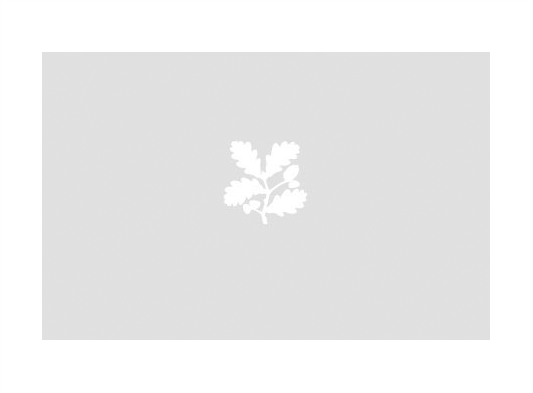The kings of England 1066-1901 / by the Hon. Clive Bigham ….
Charles Clive Bigham, 2nd Viscount Mersey (1872 - 1956)
Category
Books
Date
1929
Materials
Place of origin
London
Collection
Anglesey Abbey, Cambridgeshire
NT 3134174
Summary
Clive Bigham, 2nd Viscount Mersey, The Kings of England 1066-1901, London: John Murray, 1929. Binding: Twentieth-century full red morocco; gilt fillets to form a border; gilt armorial centrepiece stamp on upper board: Lord Fairhaven's coat of arms; spine gilt, lettered direct: 'The kings of England 1066-1901 / Bigham / 1929'; sewn onto five raised bands; gilt fillets on board edges and turn-ins; gilt textblock edges. Binder's stamp: Robson & Co. Ltd.
Full description
Coats of arms and other armorial devices are familiar to us from letterheads and various kinds of public signage, but heraldry is taken less seriously today than was the case in the past; corporate logos have taken over as the ubiquitous graphic badges of identity. In earlier times, quite apart from the medieval usefulness of painted arms for distinguishing enemies on a battlefield, heraldry came to be eagerly pursued as a means of demonstrating social status. Throughout the early modern period, a family coat of arms and the right to display it was a mark of gentry or noble rank, in a society which cared about such things. Seventeenth-century antiquaries spent many hours researching their ancestors, so as to demonstrate their entitlement to complex and impressive coats of arms, while the College of Arms in London, as the central regulating body, sent heralds around the country on visitations to check that arms were being used legitimately. It followed that gentlemen were eager to display their arms wherever they could, around their property and on domestic objects. Books provided good opportunities for this, as armorial bearings could be used to good effect both on bookplates and on bindings. The idea of decorating the outside of a book with its owner's coat of arms can be traced back to medieval times and grew in popularity during the sixteenth century. The earliest English examples are mostly royal ones, with the royal arms found on books intended for the libraries of Henry VIII or Edward VI, but the practice spread to the aristocracy and gentry during the second half of the sixteenth century. By 1600, armorial binding stamps were increasingly being used by book owners, and the practice remained popular for as long as books were being made and bound as a handcrafted process. The introduction of mechanisation and the mass production of publishers' bindings during the nineteenth century led to the declining use of personal armorial stamps, and armorial bindings from that time and later are more typically found on school prizes. Lord Fairhaven is quite unusual, therefore, as a twentieth-century collector who commissioned and used a personal armorial binding stamp for his books. The modern books at Anglesey Abbey are variously found in publishers' bindings, as issued, or in more handsome full- or half-leather bindings, added to enhance the luxury of the library shelves. Some of these leather bindings are further decorated with a large oval stamp, applied in gold, featuring Fairhaven's arms (in the language of heraldic blazon, 'Argent two bars in dexter chief a saltire coupled gules; supporters, two winged bulls gorged with chains the arms of Broughton hanging from them; coronet of a Baron'). The stamp seems to have been used quite sparingly, and is found selectively on early-twentieth-century full-leather bindings, particularly on books which were presentation copies to Lord Fairhaven. Text adapted from David Pearson's entry in 'Treasures from Lord Fairhaven's Library at Anglesey Abbey', 2013, cat. 48, pp. 146-7.
Bibliographic description
xi, [1], 522 p., [37] leaves of plates : ill., geneal. tables, ports. ; 23 cm. Provenance: Twentieth-century armorial bookplate (small variant), signed Badeley 1930: ‘Urban Huttleston Rogers Lord Fairhaven’ [i.e.: Urban Huttleston Rogers Broughton, 1st Lord Fairhaven (1896-1966)]. Manuscript inscription on third front free endpaper: "Lord Fairhaven from Mersey 15.X.29" [i.e. from the author, Clive Bigham, 2nd Viscount Mersey (1872-1956) to Urban Huttleston Rogers Broughton, 1st Lord Fairhaven (1896-1966)]. Binding: Twentieth-century full red morocco; gilt fillets to form a border; gilt armorial centrepiece stamp on upper board: Lord Fairhaven's coat of arms; spine gilt, lettered direct: 'The kings of England 1066-1901 / Bigham / 1929'; sewn onto five raised bands; gilt fillets on board edges and turn-ins; gilt textblock edges. Binder's stamp on front pastedown: Robson & Co. Ltd.
Provenance
Presentation copy from the author to Huttleston Rogers Broughton, 1st Lord Fairhaven (1896-1966) and then bequeathed by him to the National Trust with the house and the rest of the contents in 1966.
Makers and roles
Charles Clive Bigham, 2nd Viscount Mersey (1872 - 1956), author
